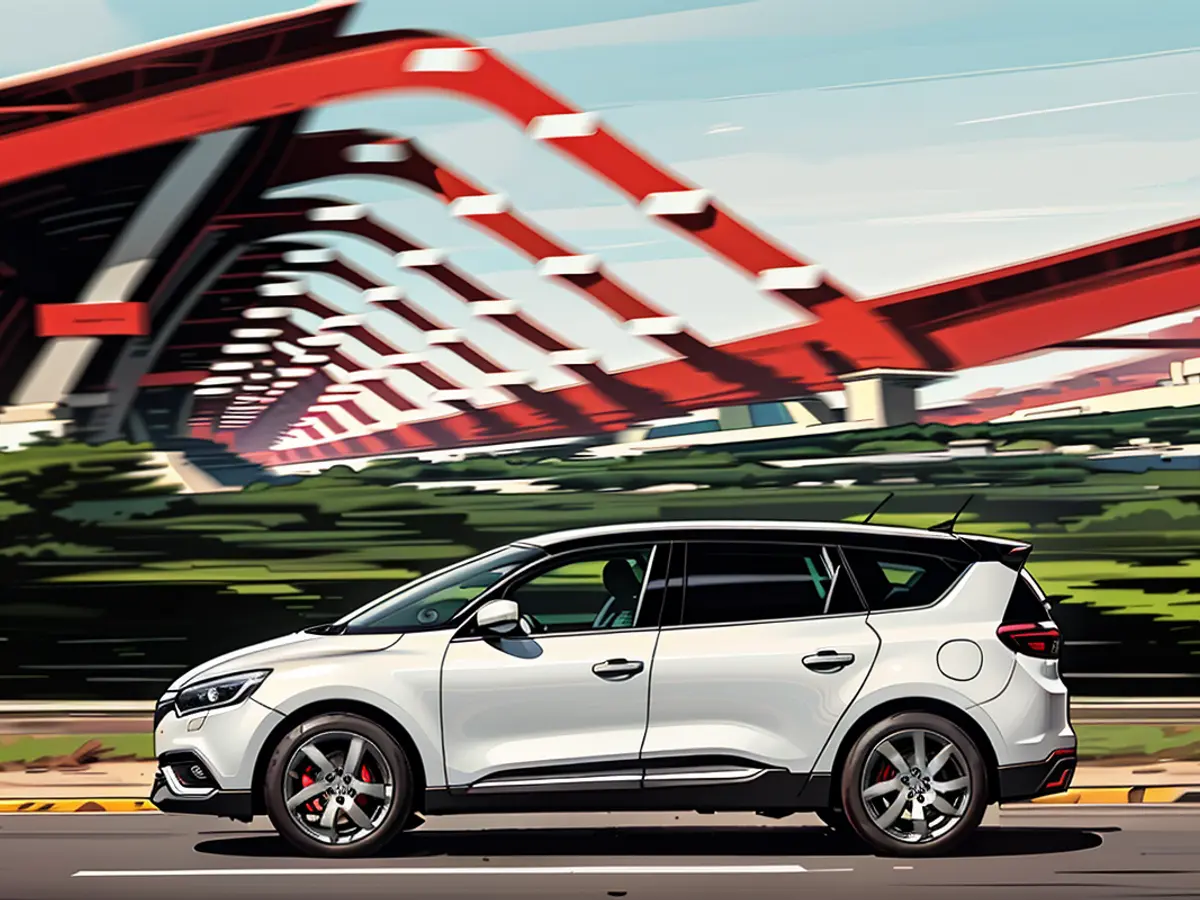Renault Scénic exhibits its flaws, yet demonstrates an upward trajectory as well.
The Renault Scénic, a family-oriented vehicle known for its roominess and adaptability, has faced some challenges with major inspections at TÜV, potentially resulting in hefty expenses. Fortunately, the newer versions seem to handle these inspections better.
The discontinuation of vans has also impacted the Scénic, as the latest edition is no longer available as a new compact van. The current Renault Scénic is an electric SUV carrying the same name, though.
Those longing for the Scénic's space and versatility within a family vehicle have to opt for used models, settle for internal combustion engines, and be prepared to deal with a few French quirks, evident in its inspection results (HU).
Historical Overview
For over two decades, the Scénic has been produced as a large family car, with the fourth generation entering the market in 2016. Its predecessor, the Scénic III, was sold from 2009 to 2016, seeing two facelifts in 2012 and 2013, which introduced new engines and advanced driver assistance systems. The original Scénic debuted in 1996.
Body and Variants
Renault sells the Scénic as a five- and seven-seater Grand Scénic. The Scénic III also featured an off-road variant named Xmod, outfitted with a three-stage traction control, increased ground clearance, and robust bumpers. Mild-hybrid powertrains were added to the Scénic IV lineup in 2017, both in diesel and gasoline options.
Dimensions (as per ADAC)
- Third Generation: 4.34 to 4.57 meters x 1.85 meters x 1.62 to 1.68 meters (L x W x H); trunk volume: 470 to 1870 liters (Scénic), 678 to 2083 liters (Grand Scénic)
- Fourth Generation: 4.41 to 4.64 meters x 1.87 meters x 1.66 meters (L x W x H); trunk volume: 506 to 1554 liters (Scénic), 718 to 1901 liters (Grand Scénic)
Strengths
The Scénic is applauded for its passenger comfort and versatility, manifested in an abundance of storage space. According to "Auto Bild TÜV-Report 2024", the drive shafts are considered "completely trouble-free" through the first two inspection rounds.
The driving experience is relatively trouble-free, with steering components and brakes functioning well through the first two inspection rounds. Oil leaks are rarely an issue, and the exhaust system is sturdy.
Weaknesses
The third generation tends to struggle more with inspections, with more significant defects causing failure more often than average, as per the report. This often results from issues with springs and dampers, tie rods with play, and corroded suspension components.
The brake lines sometimes draw criticisms, and brake discs wear out quite easily. Rear light defects are common, and the successor occasionally fails in the light category, sometimes even failing the exhaust gas test (AU).
Breakdown Statistics
The Scénic's performance in ADAC breakdown statistics varies based on registration years. Models from 2009 to 2017 fare mediocre, while Scénics from 2018 and 2019 have a poor balance. However, Scénics from 2020 and 2021 perform well.
Among the breakdown hotspots are starters in cars from 2009 to 2010, the exhaust pipe in 2011, and brake calipers or rear brake cylinders in models from 2009 to 2012. Models from 2017 often encounter problems with the fuse and relay box, while striking starter batteries in models from 2016 to 2020 result in breakdowns.
Engine Options
- Scénic III: Gasoline (Four-cylinder, Front-wheel drive): 81 kW/110 PS to 103 kW/140 PS; Diesel (Four-cylinder, Front-wheel drive): 63 kW/85 PS to 118 kW/160 PS
- Scénic IV: Gasoline (Four-cylinder, Front-wheel drive): 85 kW/115 PS to 120 kW/163 PS; Diesel (Four-cylinder, Front-wheel drive): 81 kW/110 PS to 118 kW/160 PS. The 1.5-liter diesel comes with a mild hybrid featuring a start generator, recuperation, and buffer battery: 87 kW/118 PS.
Dealer selling price according to German Automobile Trust (DAT) with statistically expected kilometers: Three price examples
- Grand Scénic IV Bose Edition 1.5 dCi 110 Energy (6/2018); 81 kW/110 PS (Four-cylinder); 108,000 kilometers; 14,773 Euro
- Scénic III Authentique 1.2 TCe 115 Energy (6/2015; Facelift); 85 kW/115 PS (Four-cylinder); 124,000 kilometers; 6,286 Euro
- Grand Scénic IV Intense 1.5 dCi 110 Hybrid Assist Energy (6/2018); 81 kW/110 PS (Four-cylinder); 108,000 kilometers; 13,227 Euro
Buyers seeking an affordable used family vehicle with the Scénic's space and versatility may encounter French quirks in its inspection results, as mentioned earlier. Alternatively, those preferring the efficiency of used cars with internal combustion engines can explore the market for used Scénics.








